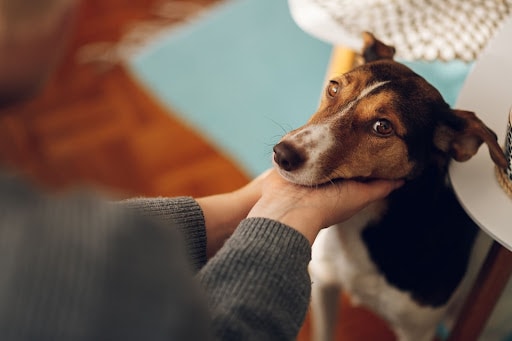A responsible pet parent is one that is constantly on top of their pets health and well-being. It is not uncommon for pets to get tumours and we at Pet Lovers Centre, believe you as a pet-owner are an essential member of your pet’s health care team. It is important for pet parents to know how to identify lumps and bumps and what to do should they find one. The good news is, there are active things you can do at home as part of their preventive care plan.
First off, what you need to know is that some lumps are not cause for major concern, whilst others can be an indication of more serious problems. For this reason, it is crucial that lumps are checked early and often, so we want to give you some tips on how to check your pet at home.
1. Take 5-10 minutes each month to check for lumps, bumps, and swellings.
It would make it a lot easier and a lot more consistent to pick the same date for each month. Mark it on your calendar, and turn your check into a monthly routine. It’s a quick and simple check that could ultimately act as the determining factor in early detection, treatment, and prognosis.
2. Check your pet from top to tail.
We know pinning your pet down is not an easy feat, especially if their cheeky little creatures that love to play around. Oftentimes, your pet will feel like they are getting a massage from you, and can happily let you check.
To begin your monthly lumps and bumps check, first find a position that’s comfortable for your pet. Determine what position they’re most comfortable in and can offer you full access, whether that’s lounging in the sun, sitting on your lap or on a tabletop.
Next gently pet your pet from top to bottom, applying the slightest bit of pressure. Again, you will have to determine the tolerance level of your pet— if they are accustomed to cuddling and petting, they’ll likely enjoy the attention.
Continue applying light pressure making sure to get every inch of your pet – starting from their head and working your way downwards towards their underbelly, legs and paws. Pay special attention to under the armpits and the base of the tail as these happen to be common spots for bumps to appear. But of course, don’t forget ears, nose, and even inside the mouth.

3. What happens if you feel a bump?
Schedule an appointment with your vet to have the bump checked out, of course. If you feel anything that’s different or not smooth, note down the location and try to be as thorough and detailed as you can so you make sure you or your vet find it again.
4. At your appointment
Your veterinarian can aspirate the lump to get a better idea of what it might be. From there, your vet can advise you on what steps you should take next. It is not always a surgical procedure, however it could be recommended. Fortunately, a lot of time many bumps and lumps commonly found on pets happen to be benign and not a major cause for concern. With that being said, your vet will advise you on the best and most correct procedure there is depending on the type of growth or mass. If the mass is cancerous, your vet might recommend surgical removal.

Bottom Line
Taking your pet to see the veterinarian for an annual check-up is a good start, however it is just as important to hold monthly at-home exams as a way to catch any lumps or bumps early on. No matter what its cause, early detection is essential so make sure you take a few minutes each month to do your lump and bump checks
Need help or guidance? Visit Pet Lovers Centre online, or any of our Pet Lovers Centre locations today!



